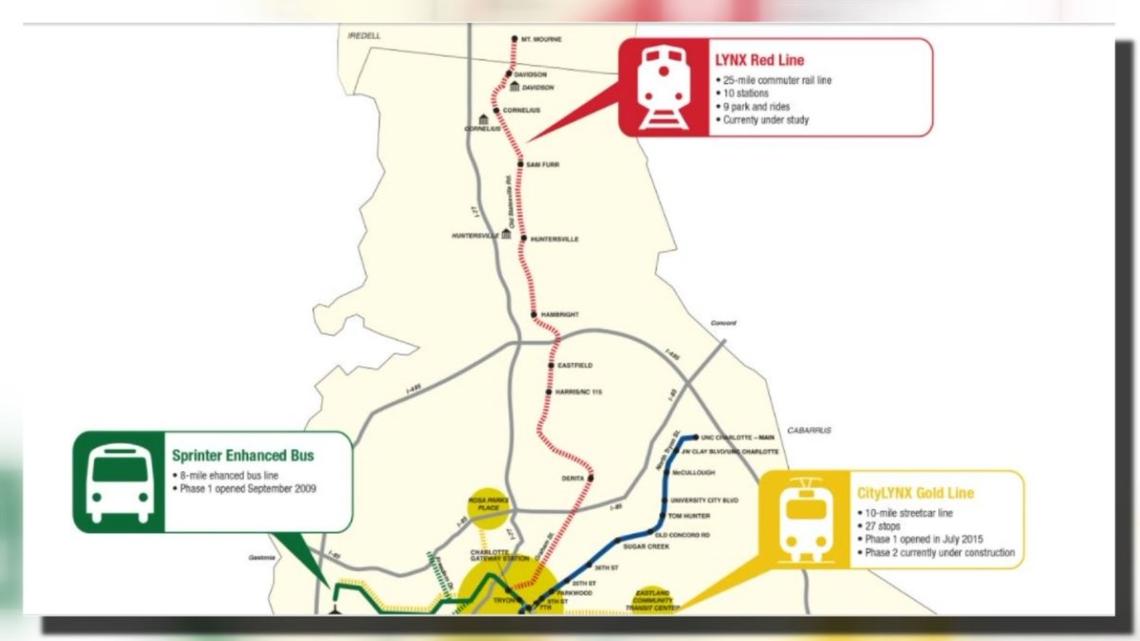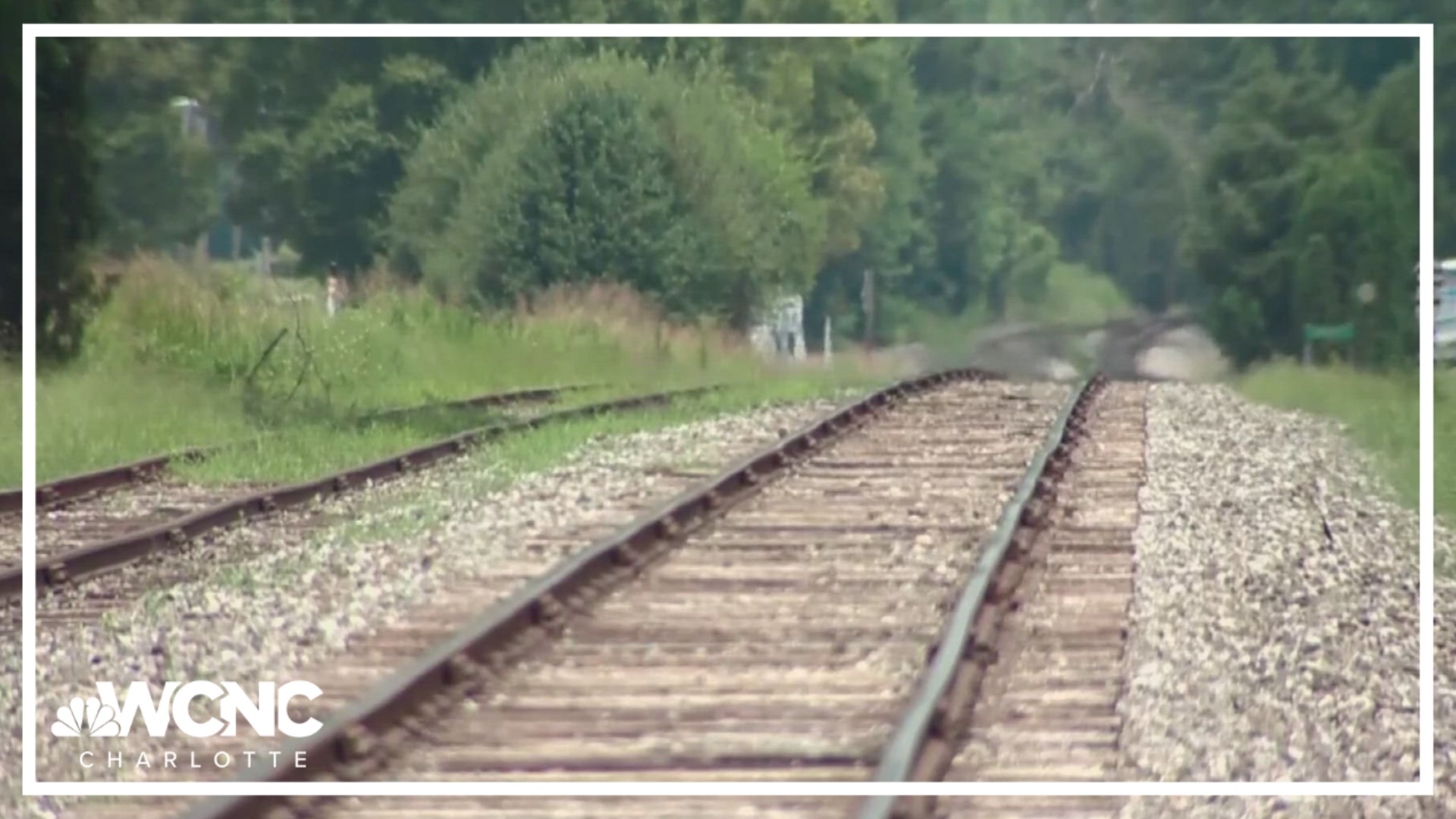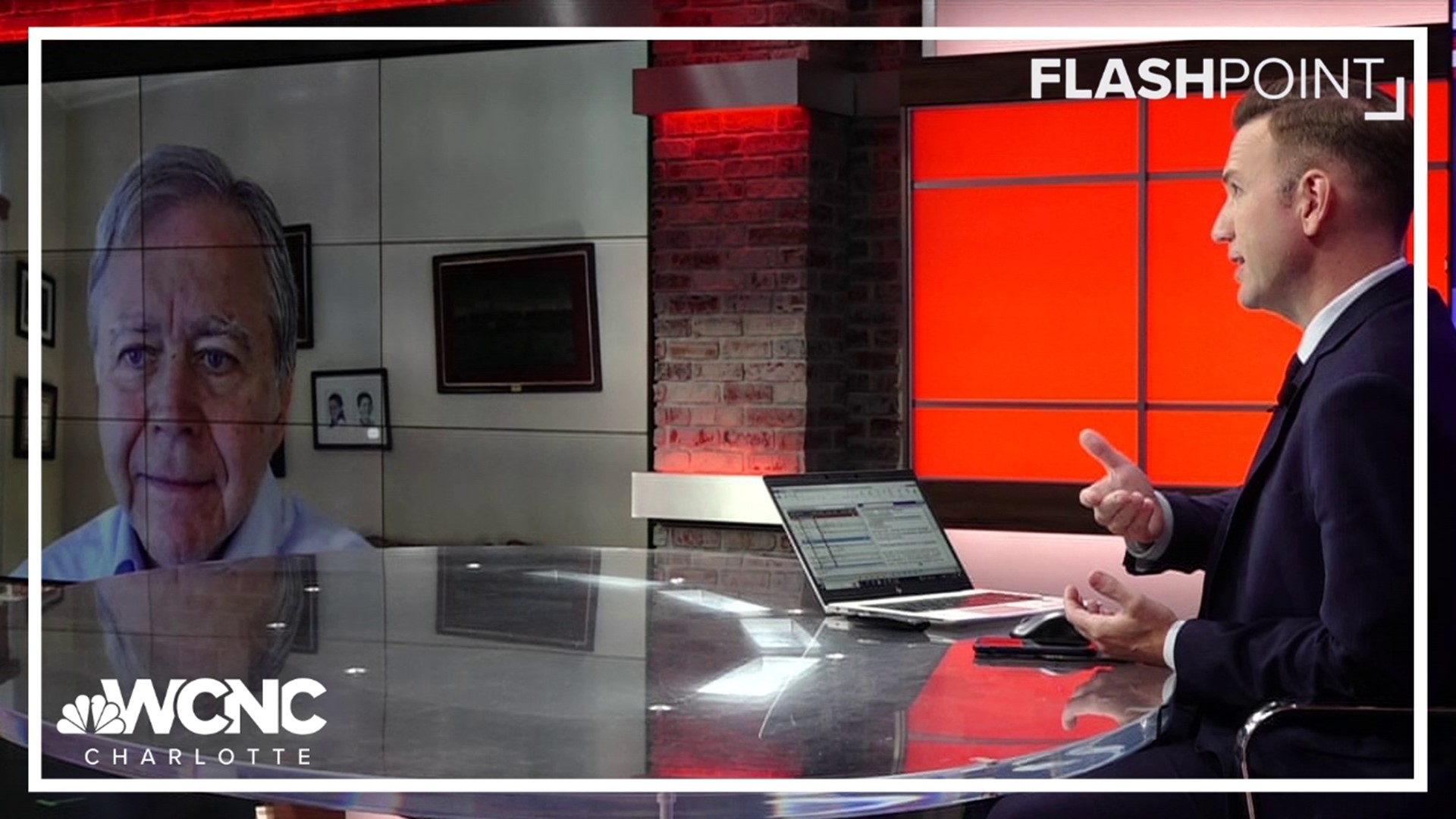CHARLOTTE, N.C. — A newly released letter between Norfolk Southern Railway Company and the city of Charlotte shows the two parties are actively discussing the decades-old plans to potentially launch a passenger train to northern Mecklenburg County. If built, the train would carry commuters between Charlotte and Huntersville, Mooresville, Davidson and Cornelius.
Norfolk Southern told Charlotte Mayor Vi Lyles and city manager Marcus Jones in July it is willing to have conservations about its freight line, according to a letter from the railroad's chief strategy officer released to WCNC Charlotte Wednesday. Public officials have longed wanted to use the railroad's existing right of way for the potential transit line.
"Norfolk Southern is willing to consider engaging with the city of Charlotte and other interested parties in the region regarding a possible transaction of the O Line," the letter says referring to their internal naming for the rail line that stretches north from Charlotte toward Lake Norman.
The letter cautions the talks are non-binding, and the railroad has "not decided upon what form such a transaction might take, whether an outright sale of the O Line or some variant of a lease."
The Lake Norman Chamber of Commerce shared a statement with WCNC Charlotte saying, "The Lake Norman Chamber of Commerce, representing approximately 850+ businesses in North Mecklenburg has been on record since 2004 advocating for passenger rail to Lake Norman. There are several transit-oriented developments along the line as well as major companies in the Commerce Station Industrial Park and Lowes Corp which could benefit from the Red Line. We are excited in the renewed discussion of this transit opportunity."
Charlotte City Council member Ed Driggs said it is not only a step forward in making the Red Line a reality but a step forward in the city’s larger mobility plan. He called it a breakthrough in an area where the city was having a number of challenges.
"It is a very important component because the northern towns are very concerned about having this connection," Driggs said. "They were very disappointed that the sales tax in 1998 was passed and the Red Line was not built because we couldn’t come to terms with Norfolk Southern."
He added as the region continues to grow, the Red Line could be essential to help move people around, provide folks with an alternative mode of transportation and take the burden off traffic.
"We are working with Connect Beyond, a large-scale mobility plan that would include rail lines, roads, bike paths, sidewalks, greenways," Driggs said. "Progress towards achieving that does depend on solving the Red Line."
Last month the city of Charlotte approved $5 million for an update on work done on the design and engineering of the Red Line.
However, Driggs said the project would need a new revenue source moving forward.
"The goal right now is to have on the ballot next November a request for public approval for sales tax that would be used to fund a lot of these projects," Driggs said.
There is some precedent to the proposal. The city's first train line, the LYNX Blue Line, runs concurrently alongside existing Norfolk Southern tracks from Woodlawn Avenue south to CATS' I-485 station along South Boulevard near Pineville.
"For the past two decades, the Red Line has been a key part of the transit vision adopted by City Council and the Metropolitan Transit Commission (MTC)," a city of Charlotte spokesperson said in a released statement. "The city has been following through on what has been contemplated for more than 20 years."
The spokesperson said the city is "cautiously optimistic" the two parities can find common ground.
In September, the Charlotte City Council voted to redesign the proposed LYNX's Red Line concept. At the time, the public was unaware of the July letter from Norfolk Southern. That letter marks the first time in years the railroad said they were at least willing to explore potential options with public officials.
As recently as 2021, the railroad told WCNC Charlotte, "Though this line remains a strategic part of our network, we have always valued our relationship with Charlotte and the surrounding communities," the previous statement read. "Wherever we can, we will continue to work with them on projects that intersect with our network and the needs of our customers."
WCNC Charlotte again reached out to the railroad Wednesday to see if it had any further comment beyond the July letter, which was released not by the railroad but by the city.
"There have been very promising developments," Ed Driggs, Chair of the City's Transportation, Planning and Development Committee, told Ben Thompson on WCNC Charlotte's Flashpoint in September. Driggs' comments came after the vote to renew the design, but he said he couldn't elaborate on specifics.
"We are hopeful that we will be able to proceed with the rest of our mobility plan, having dealt with this issue, which held us up for quite a long time," Driggs continued.
"Mobility is a shared priority for Charlotte and the region," Charlotte Mayor Vi Lyles said in a released statement to WCNC Charlotte after the publication of the Norfolk Southern letter. "Connecting Charlotte to North Mecklenburg has always been the pathway to unlocking regional mobility and getting state authorization for a sales tax."
In 1998, a half-cent tax referendum was passed to help fund transportation projects.
"In November 1998, the citizens of Mecklenburg County approved the levy of a one-half cent sales tax to be used to finance public transportation systems," according to the MTC."A Transit Governance Interlocal Agreement was negotiated and then signed in February 1999 between the County, the City and the six Towns."
The money went toward the 2025 Plan and the Interlocal Agreement, which was released in 1998.
In September, the vote by city council to renew the design allocated $5 million to a contractor.


In addition to the Red Line, public officials are also still exploring the LYNX Silver Line, a proposed rail line that would serve Matthews and northern Union County with continuing service through Uptown Charlotte, Charlotte Douglas International Airport, and possibly Belmont and eastern Gaston County.
A third phase of the CityLYNX Gold Line remains unfunded even as the street car provides service to locations between Johnson C. Smith University, Uptown Charlotte and portions of Charlotte's Elizabeth and Plaza Midwood neighborhoods.
In recent years, the Charlotte Area Transit Service, which runs the city's bus and transit trains, has been struggling with staffing and safety issues.
Across the region in recent months, state-funded Amtrak service, which carries Charlotte passengers to Raleigh and beyond, has been seeing a record-high number of passengers using that service. In future years, Amtrak hopes to extend service to Asheville and Wilmington.
Contact Jesse Pierre at jpierrepet@wcnc.com or follow her on Facebook, X and Instagram.


